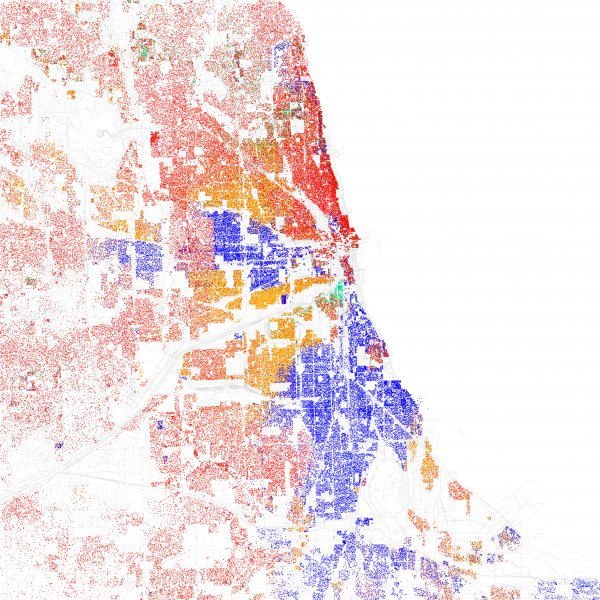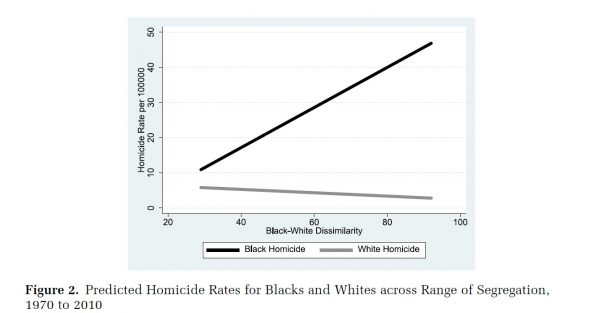
Since the mid-20th-century, research has linked racial residential segregation to a variety of unequal outcomes between racial groups, including education, health, incarceration, and employment. Segregation seems to be slightly declining recently, particularly as the USA becomes more racially diverse. This does not mean, however, that residential segregation is no longer relevant. Long-lasting legacies and impacts of racial segregation remain. Michael Light and Julia Thomas analyze how residential segregation between blacks and whites relates to racial disparities in violence and victimization.
Using decades worth of data from 1970 to 2010, Light and Thomas explore neighborhood segregation and violent crime in several large metropolitan areas across the country. Taking into account the level of non-black and non-white residents, Light and Thomas compare the risk of being the victim of a violent crime for blacks and whites across areas with differing levels of black-and-white segregation.

As the above graphic from the article shows, the impact of racial residential segregation differs across race. Increasing segregation is linked to higher victimization for blacks and low victimization for whites, but the slopes of these relationships are not equal. In essence, segregation hurts blacks more than it helps whites; racial segregation itself is not only a product of racial inequality; it also another driver of such dynamics.
This research highlights how violence is yet another factor related to racial residential segregation that hurts blacks and helps whites. Notably, the data show that metros with more integrated neighborhoods seem to have less violence overall. Thus, as America becomes more racially diverse, racial residential integration may reduce racial inequality as well as inequality in violent crime and victimization.

Comments 1
Kerry — November 16, 2019
Very intriguing !! Thanks for sharing!